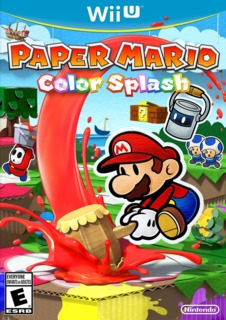GameSpot has been reviewing video games since 1996. Back then, dinosaurs hadn't been extinct for as long as they have today, computers were only just figuring out how to beat Garry Kasparov at chess, and Tamagotchi digital pets had millions of people the world over cleaning up after them. The Nintendo 64 was released in Japan and later in North America, Crash Bandicoot became the PlayStation's mascot, and notable game releases that would spawn sequels for years to come included Diablo, Quake, Resident Evil, and Tomb Raider. The world was very different back then, and so were video game reviews.
Our approach to reviewing video games at GameSpot has evolved over the years, and with the 2013 rebuilding of the site, we took the opportunity to revisit the process again. There were a couple of key issues that we wanted to address, namely that it's near impossible to write a single review that caters to everyone and that it's absolutely impossible to write a review that remains accurate when the game in question evolves over time. Our solution? Two words: multiple reviews.
Not convinced? OK, here's the 336-word version:
With the exception of review emblems, which are no more, the significant changes that we've made to GameSpot's reviews are all additive to what we were already doing. We're still committed to delivering reviews in a timely fashion, and the first review that we post for any game will still be written by a reviewer who has extensive experience with the series or genre in question. For all intents and purposes, these "featured" reviews are the same reviews that GameSpot has been producing for years, and therefore, they'll almost certainly be rendered inaccurate over time as the games reviewed are updated.
Historically, the only way for us to address this issue was to add brief "After the Fact" updates to reviews, and while we still update reviews in a similar fashion, we're well aware that we need something more. That's one of the reasons the new GameSpot site has been built to accommodate multiple reviews of the same game; when enough time has passed and a game has changed so dramatically that we no longer feel our review is helpful--and assuming there's still enough interest to warrant it--we post a new one. Our original review still lives on GameSpot, but isn't featured as prominently as the updated one.
Multiple reviews also afford us a way to present you with opinions from differing perspectives. If you're looking to get into a series that's already several games in, you might be interested to read a review that's written by someone who also missed out on earlier games to figure out if it's a good entry point, for example. Or perhaps you're looking to play a game with a child and would love to get a parent's perspective. We don't offer multiple perspectives on every game that we review, but we're an opinionated bunch, and it's rare that we can all agree on anything, so don't be surprised if additional reviews for games show up on the site as and when editors get around to playing them.
What's a "review in progress?"
On occasion, games are released before we've had ample time (or opportunities) to test every aspect. This typically occurs when a game releases with online multiplayer support, with servers activated on launch day. In cases such as this, when we can't pass judgement on a key component of a game, we will sometimes publish a "review in progress," which will be denoted by the headline and by a blue score (rather than the usual orange.) Once we're ready to evaluate a game in full, we will add the relevant critique to the existing text, and turn the article into a standard review. Given the fact that additional testing is required, the score seen on the review in progress is subject to change as necessary.
What do those numbers mean?
We rate games on a scale of 1 to 10 in order to give you an at-a-glance sense of the overall quality of a game. Please note that as the quality of gaming experiences naturally improves over time, we don't simply rate new games higher, even if they're technically better. Instead, as games come out that raise the bar, we adjust our expectations accordingly. A game that earns a high score today is probably better than a game that earned the same score on our scale several years ago.
Our scores are defined as follows:

